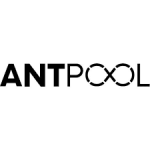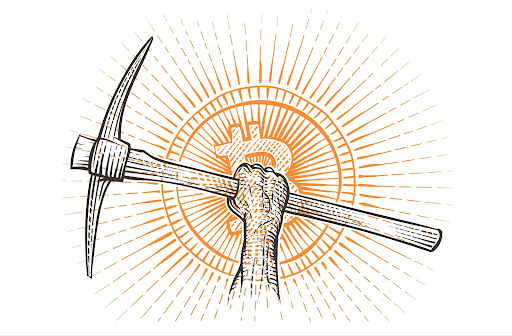
Bitcoin runs on its miners.
Mining bitcoin is also the only way for the blockchain to produce new bitcoins, awarding them to miners as they are digitally unearthed. As a result, successful bitcoin miners can run a profitable business, no matter the market.
Modern mining isn’t an individual process, however. Mining pools have risen as a way to offset the huge computational costs associated with mining in the bitcoin network–and potentially provide everyday users with a chance to earn bitcoin.
In this article, our editors have rated and reviewed the best bitcoin mining pools for 2023, rated by fees, user-friendliness, and reputation. Read on.
| Mining Pool | Fees | Pool Share | User Friendliness | Reputation | Total Blocks Mined | BMJ Score |
| F2pool | 2.00% | 10.03% | 9 | 8 | 7,791 | 4.5 |
| BTC.com | 1.5% | 4.97% | 9 | 8 | 673 | 4.0 |
| Foundry USA | 2.50% | 3.35% | 8 | 9 | 13,584 | 4.0 |
| ViaBTC | 2.00% | 4.16% | 7 | 9 | 4,670 | 4.0 |
| Antpool | 2.50% | 9.51% | 6 | 10 | 11,141 | 3.5 |
| Braiins | 2.00% | 4.93% | 7 | 9 | 1,023 | 2.5 |
| Binance Pool | 2.5% | 2.16% | 7 | 9 | 4,438 | 3.5 |
| SBI Crypto | 1.5% | 0.21% | 7 | 7 | 598 | 2.5 |
| EMCD Pool | 1.5% | 0.06% | 6 | 7 | 448 | 2.0 |
| Kano CKPool | 0.9% | 0.30% | 6 | 6 | 1 | 2.0 |
| Poolin | 2.50% | 3.38% | 6 | 4 | 951 | 2.0 |
| OKXPool | 4.73% | 0.36% | 6 | 7 | 0 | 1.5 |
 F2Pool
F2Pool
F2Pool is a diverse mining pool that mines numerous cryptocurrencies and has operated since 2013 as the first mining pool in China. It didn’t take long for the pool to take off. Just a year after launch, it became the biggest mining pool in the world, accounting for one-third of the hash rate on the entire bitcoin network, making it stand out as one of the best mining pools.
On top of its outstanding growth, f2pool was the first mining pool to use an automatic payout system for the convenience and security of miners. As of writing, f2pool is the third biggest active mining BTC pool in the world (behind Foundry USA and Antpool) and has generally had a great year despite losing out to some of its close competitors. (BMJ Score: 4.5)
 BTC.com
BTC.com
BTC.com is known for its wallet and blockchain explorer. BTC Pool was founded in 2015 and is run by Bitmain Technologies, one of the world’s leading mining equipment manufacturers.
The pool uses the Full Pay Per Share (FPPS) payment method whereby, unlike PPLNS, miners get paid whether the pool finds a block or not.
As of writing, the pool is one of the 10 biggest bitcoin mining pools. That said, it had a below-average year in 2022 and 2023 s, registering a steep drop in the blocks mined compared to previous years. (BMJ Score: 4.0)
 Foundry USA
Foundry USA
Foundry USA is a subsidiary of the venture capital firm Digital Currency Group, which also runs companies like Grayscale, Investments, and CoinDesk. It provides digital asset miners with capital, consulting, machines, and intelligence.
Foundry USA became the second-largest mining pool in November of 2021 amid the China mining ban and currently controls around 3.4% of the all-time bitcoin network hash rate.
In 2023, Foundry USA has been a force to be reckoned with, putting up the best mining performance in that period, controlling roughly 29.8% of the network’s hash rate for the year (up by 8% from the previous year) and taking the top spot in the process. (BMJ Score: 4.0)
 ViaBTC
ViaBTC
ViaBTC has been around for roughly six years and has grown to be one of the world’s largest and most popular mining pools.
On top of PPLNS and PPS+ reward algorithms, ViaBTC supports SOLO whereby a single miner independently conducts and executes the mining process and receives the whole block reward.
The mining pool has been generally consistent throughout the years and in 2023, it ranks as one of the top 5 mining pools, controlling 8.73% of BTC’s hash rate — but with high fees. (BMJ Score: 4.0)
 Antpool
Antpool
Similar to BTC.com, Antpool is run by Bitmain. It was established in Beijing, China, and mined its first block in 2014. Antpool supports different mining modes to cater to customers with different mining needs, from mining farms and individuals who can generate considerable hash rates to average miners, making it one of the best Bitcoin pools.
Moreover, Antpool supports two payment methods, PPLNS and Pay Per Share Plus (PPS+) whereby miners receive payment for their contribution to the network even if a block is not found, minus a fee.
Antpool has been one of the few consistent mining pools since taking off seven years ago, and 2023 was no exception. It put up better numbers than last year regarding pool share and mined blocks. (BMJ Score: 3.5)
 Braiins (Slush Pool)
Braiins (Slush Pool)
Formally known as Slush Pool, Braiins has operated since 2010 under Braiins Mining Ltd. It is based in Prague but operates globally and is the first and oldest organized mining pool for bitcoin. It is also one of the top mining pools.
The mining pool uses the Pay-Per-Last-N-Shares (PPLNS) payout mechanism, which is highly correlated with the pool’s luck and distributes profits based on the number of shares miners contribute.
Despite slowing down towards the end of the year, Braiins still performed better in terms of pool share and blocks mined than the previous year. (BMJ Score: 3.5)
 Binance Pool
Binance Pool
Binance Pool is a subsidiary of Binance, the world’s largest crypto exchange platform, founded in 2017. The pool has mining nodes in North America, Europe, and China.
While the Binance pool is still relatively new, just a little over three years old, it was one of the top 4 pools in 2021 and held its position in 2022, mining around 1,000 more blocks than the previous year. So far, in 2023, it has held on to its fourth-place spot and controls 10.36% of the network’s hash rate for the year.
Binance has been a rapid innovator in the space, launching a cloud mining service to cater to users who don’t have access to mining equipment, but higher fees are a drawback. (BMJ Score: 2.5)
 SBI Crypto
SBI Crypto
SBI Crypto is a Japanese mining firm founded in 2018 under the Japanese financial conglomerate SBI Holdings. The firm has been mining crypto since 2017, though it wasn’t till 2021 that it opened mining pool services to institutional and individual customers.
Compared to 2021, SBI has generally had a great year in 2022 and even broke into the top 10 BTC mining pools list, even if the total number of blocks mined is a fraction of the biggest pools. In 2023, it’s holding steady at the 11th spot. (BMJ Score: 2.5)
 EMCD Pool
EMCD Pool
EMCD Pool is considered a rising star in the crypto mining ecosystem. It is one of the top 10 largest bitcoin mining pools globally and offers low commission rates, 24/7 multilingual support, and a comprehensive ecosystem approach to mining. The platform runs on the FPPS+ rewards system, allowing daily withdrawals, and offers a user-friendly interface.
EMCD Pool stands out for its stability, low fees, and an ecosystem that includes features like Coinhold, which can yield up to 12.7% per annum on cryptocurrencies. The service aims to provide a convenient and safe solution for earning passive income in crypto mining. (BMJ Score: 2.0)
 Kano CKPool
Kano CKPool
Established in 2014, KanoPool offers bitcoin mining with servers in America, Asia, and Europe. The pool charges a low % commission fee of 0.9% and uses the Pay-Per-Last-N-Shares (PPLNS) payment method. However, the pool has several drawbacks, such as a need for more information about the tokens that can be mined, an outdated interface, and the absence of multiple mining systems. Overall, the platform has yet to keep up with industry expectations, with some users claiming low returns from using the pool. (BMJ Score: 2.0)
 Poolin
Poolin
Poolin is a mining pool under Beijing Satoshi Smart Co, launched in 2018. The mining pool took off properly toward the end of 2019 and has been one of the top BTC pools in the world ever since.
However, in the last quarter of 2022, Poolin announced liquidity problems that made it suspend internal transfers and even withdrawals from its network. The announcement led to some miners leaving the pool, leading to a drop in hash power. Since then, its hash power has leveled off, so we’ll see if it can stage a comeback in the latter half of 2023. (BMJ Score: 2.0)
 OKX Pool
OKX Pool
OKX is a crypto company founded in 2017 and headquartered in Seychelles, popular for its crypto exchange. It launched its mining pool services in 2018 and broke into the top 10 list less than two years later.
However, towards the end of 2020, OKX lost over 95% of its hash power after suspending withdrawals from trading accounts. OKX is yet to recover to match its glory days performances fully. (BMJ Score: 1.0)

How Bitcoin Mining Pools Work
Every time a bitcoin changes hands, miners process the complex algorithms that unlock the blockchain and record a new owner. They are, in a very real sense, the backbone of the bitcoin network.
Yet, as the bitcoin network has grown in popularity, this process requires increasingly intense computing power. Without spending a fortune, it’s almost impossible for individuals to set up a mining operation with a realistic chance of reward. The solution: mining pools.
A mining pool connects users into a networked “mine.” You dedicate a portion of your computer’s processing power to the overall operation, and in exchange, you get a portion of the created bitcoins. By joining a bitcoin mining pool, you can contribute to the network while also getting a realistic chance to earn some bitcoin in the process (albeit in smaller amounts).
While reviewing mining pools, one of the most important terms you should know is “hash rate.” This is the speed at which a mine processes the bitcoin algorithm.
A hash is a mine’s attempted answer, and the rate is measured at hashes per second. In the table above, we have represented this as “Pool Share” – each mining pool’s percentage of the overall hash rate across the bitcoin network. (For example, a pool share of 20.9 percent means that this mining pool provides 20.9 percent of the bitcoin network’s overall hash rate.)

What You Need to Mine Bitcoin from the Best Bitcoin Mining Pools
1. Bitcoin Wallet
After successfully validating a block, you’ll need a bitcoin wallet to store the coins your mining efforts yield. It may be wise to create a bitcoin wallet solely for mining activities, separate from your other bitcoin investments.
There are a variety of online wallets to choose from, though as a miner you could consider our list of the best cold storage wallets, which are considered safer.
3. Mining Hardware
Mining bitcoin requires powerful hardware. Therefore, using common CPUs and GPUs may not cut it in terms of practicality and will be a waste of your time and electricity.
Your best bet may be to buy a specialized mining machine called an ASIC or Application-Specific Integrated Circuit device. See our list of best crypto mining rigs to discover the best ones in the market, their specifications, price, energy consumption, and more.
4. Bitcoin Mining Calculator
Mining calculators are handy tools that calculate the profits and expenses of cryptocurrency mining. They make your life easier by considering factors such as the hash rate of the equipment, the cost of energy it will consume, pool fees, and others to estimate the expected profit.
Mining calculators are only sometimes accurate; however, WhatToMine and NiceHash are some of the most reliable.
5. Cheap and Reliable Power Supply
Graphic cards in mining rigs work 24 hours daily, consuming much power. This is why mining farms are set up in hand-picked locations where the cost of electricity is cheaper.
On top of consuming a lot of power, mining rigs generate a lot of heat. While some come with built-in fans, the room might get hot quickly if you have multiple rigs. Therefore, you might need to consider external cooling which will also help protect your GPUs from failure due to overheating.
Benefits of Bitcoin Mining Pools
Why should you consider joining a Bitcoin mining pool? The best upside to Bitcoin mining pools is that they provide a stable income stream for miners. Mining pools distribute awards amongst participants regularly, reducing the variance often associated with individual mining.
Joining a mining pool also comes with reduced hardware requirements, so it’s a great option for miners who don’t want to deal with the costs and maintenance associated with heavy mining equipment. Additionally, when you join a mining pool, you often get access to monitoring tools, real-time mining statistics, and support to help you troubleshoot any issues you may encounter.
Important Mining Pool Terms
Before you join a mining pool, here are some important mining pool terms to keep in mind:
Pay Per Share: This refers to a mining reward system in which miners are instantly paid out solely based on the accepted shares they contribute to the pool. In this system, miners can instantly withdraw their earnings from the pool’s balance.
Pay Per Last N Shares: With this reward model, miners’s rewards are determined by the previous N pool shares. This helps to prevent pool-hopping and penalizes pool disloyalty.
Full Pay Per Share or Pay Per Share+: This reward system is similar to the regular Pay Per Shares system. The only difference is that the mining pool will also pay a transaction fee reward in addition to the block reward.
To get more free crypto money-making tips, subscribe to the Bitcoin Market Journal newsletter!

